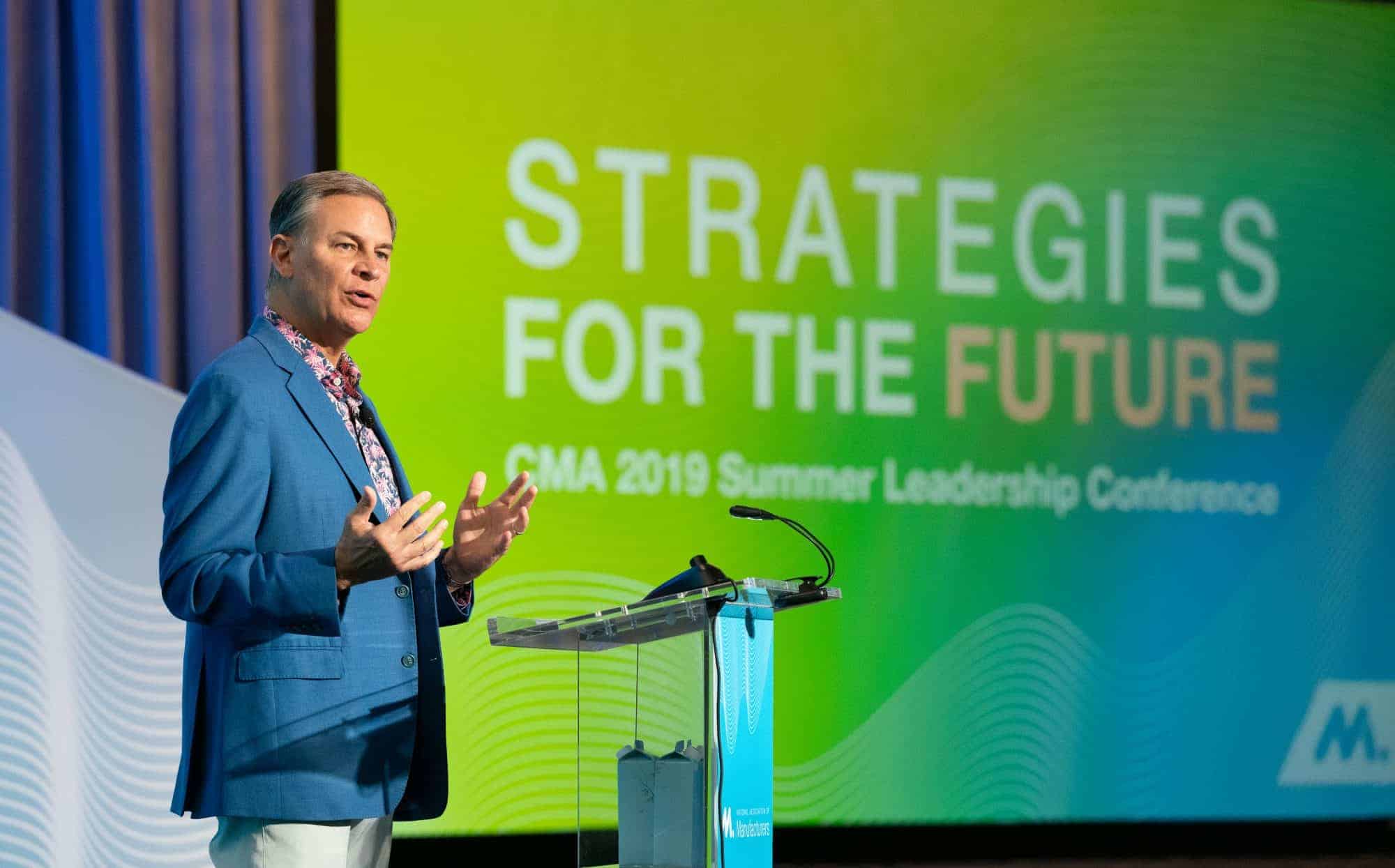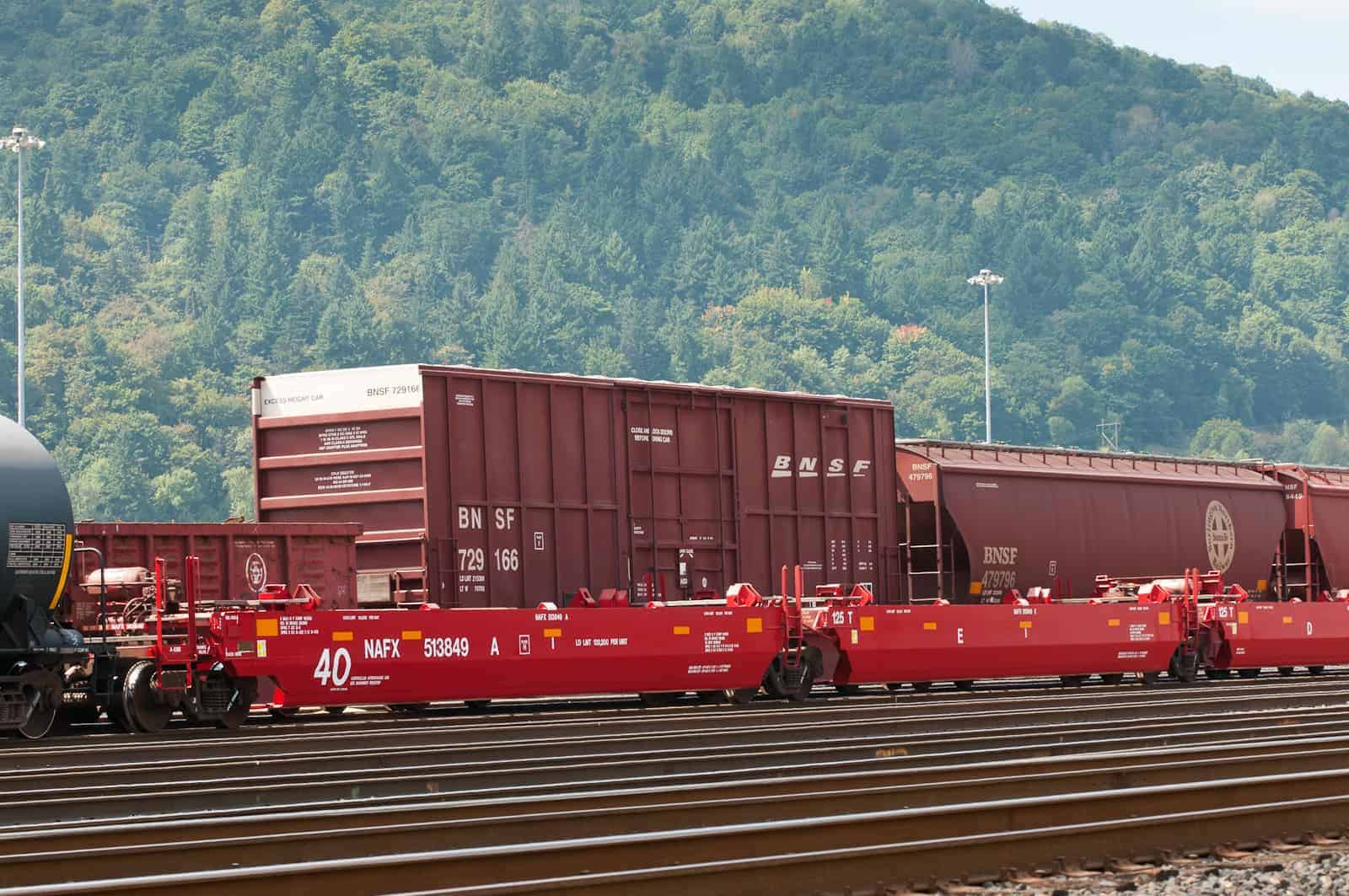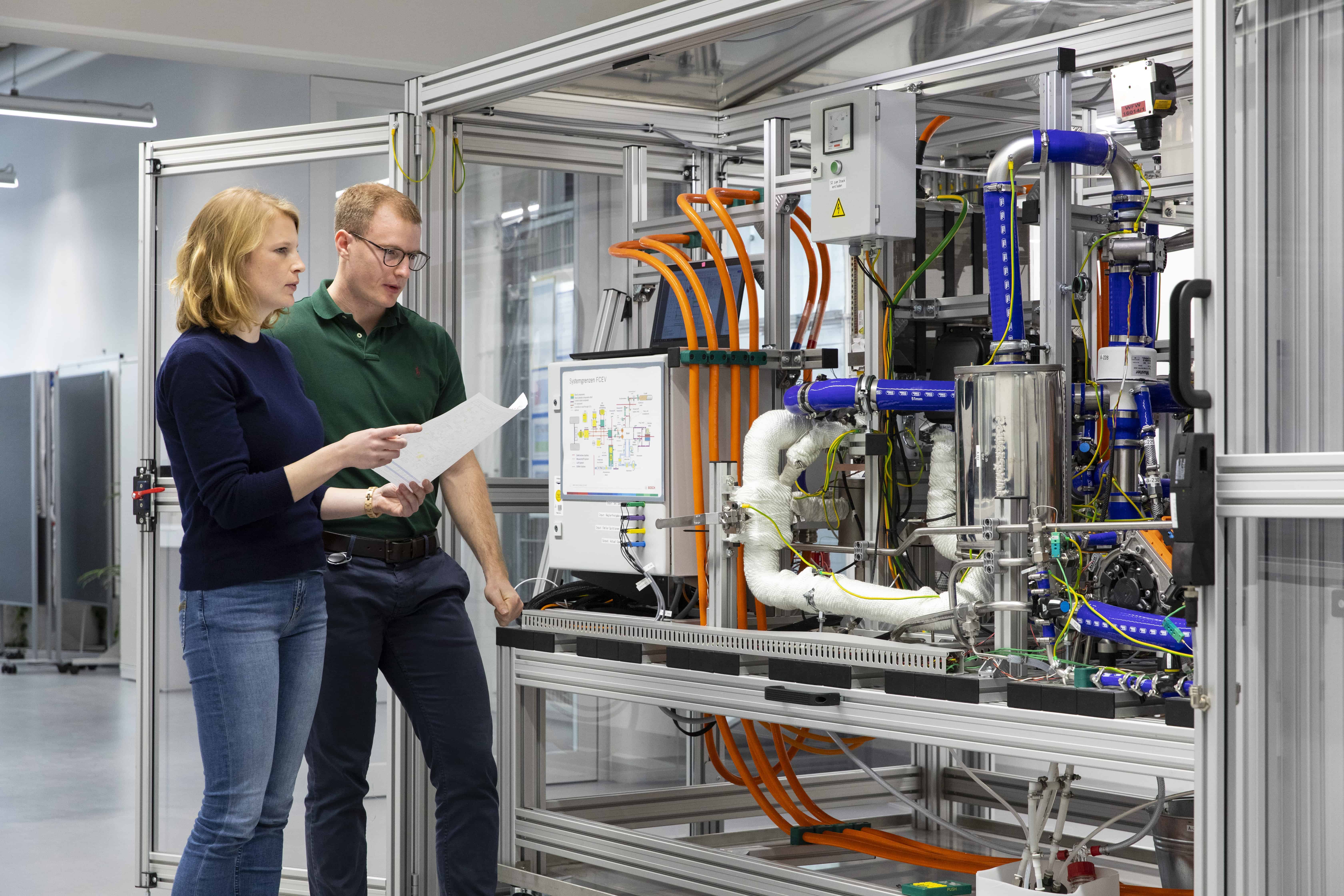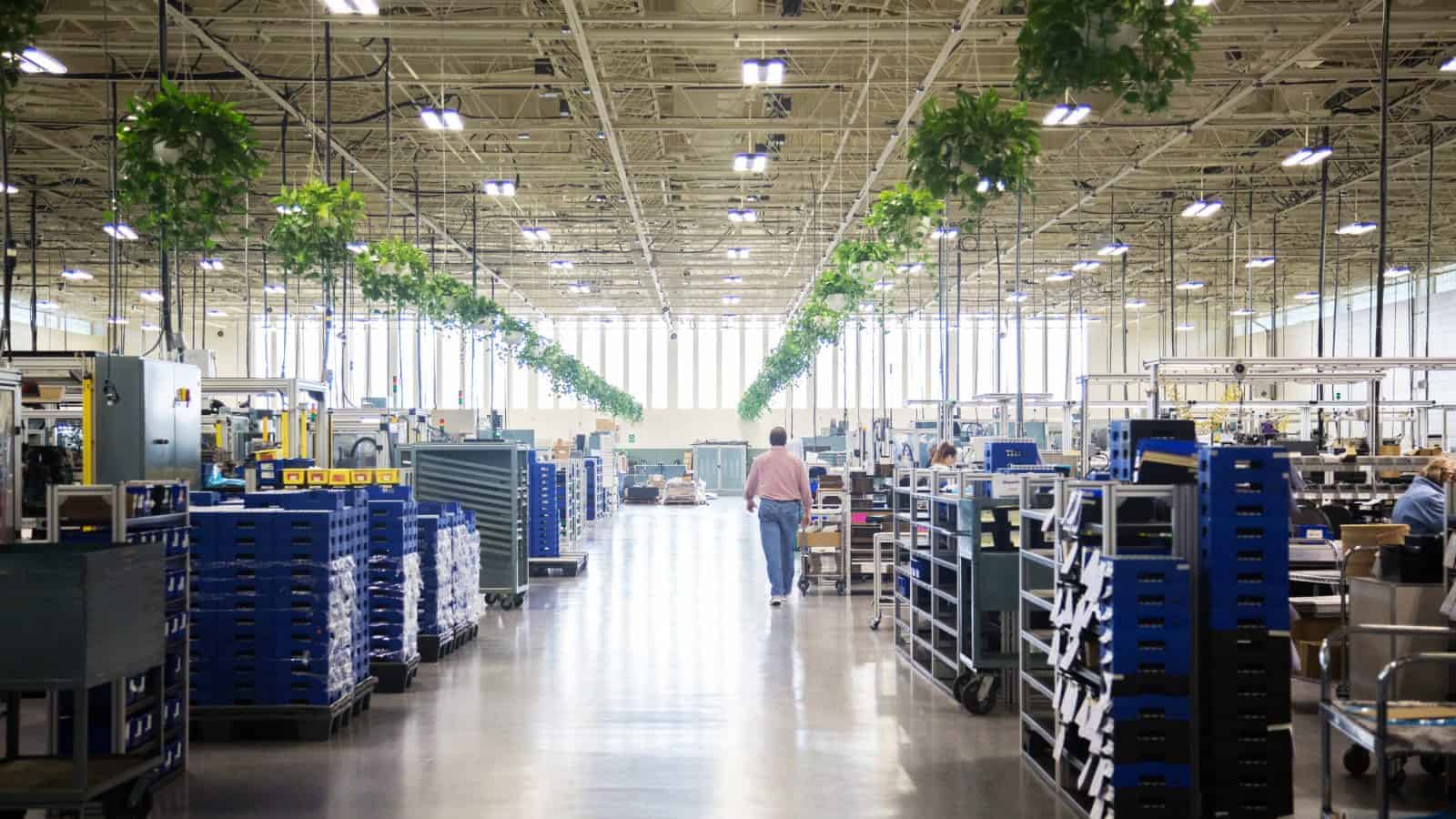EPA Administrator Wheeler Announces WOTUS Repeal Rule at NAM
Action Follows Advocacy by Manufacturers to Protect Water, Provide Certainty
Washington, D.C. – Environmental Protection Agency Administrator Andrew Wheeler and Assistant Secretary of the Army for Civil Works R.D. James joined National Association of Manufacturers President and CEO Jay Timmons at NAM headquarters to announce the finalization of a rule to repeal the controversial 2015 Waters of the United States rule and clear the way for a new rule to protect America’s water resources without overstepping the bounds of the law. Manufacturers sought this action from the EPA and for decades have advocated for clear rules to protect clean water and provide long-term certainty for economic growth.
Today, EPA and the Department of the Army finalized a rule to repeal the previous administration’s overreach in the federal regulation of U.S. waters and recodify the longstanding and familiar regulatory text that previously existed, said Administrator Wheeler. Today’s Step 1 action fulfills a key promise of President Trump and sets the stage for Step 2—a new WOTUS definition that will provide greater regulatory certainty for farmers, landowners, homebuilders and developers nationwide.
America is now one step closer to smart and balanced regulation that protects our nation’s precious water resources, said Timmons. Courts already declared the 2015 rule illegal, following years of litigation that included a 9-0 victory for the NAM at the Supreme Court, so manufacturers are pleased to see it officially struck from the books. The old water rule, which sought to regulate dry land, was confusing and counterproductive. Manufacturers are committed to environmental stewardship, so now we look forward to a new, more effective rule to protect clean water.
-NAM-
The National Association of Manufacturers is the largest manufacturing association in the United States, representing small and large manufacturers in every industrial sector and in all 50 states. Manufacturing employs more than 12.8 million men and women, contributes $2.38 trillion to the U.S. economy annually, has the largest economic multiplier of any major sector and accounts for more than three-quarters of private-sector research and development. The NAM is the powerful voice of the manufacturing community and the leading advocate for a policy agenda that helps manufacturers compete in the global economy and create jobs across the United States. For more information about the Manufacturers or to follow us on Shopfloor, Twitter and Facebook, please visit www.nam.org
In Today’s Political Climate, Business Community Must Lead

At the Council of Manufacturing Associations summer conference last week, National Association of Manufacturers President and CEO Jay Timmons called on the business community to lead in today’s political climate.
At @namcma‘s summer conference, I had the pleasure of speaking with top business advocacy leaders. Our country feels more divided than united. Manufacturers have to be advocates for individual liberty and equal opportunity.
— Jay Timmons (@JayTimmonsNAM) August 12, 2019
Timmons urged business leaders to show Americans the good that their companies are doing in communities, rejecting discrimination and bigotry and doubling down on free enterprise and individual liberties.
The solution is not to go on the attack or get defensive, nor is it siding with one party over the other. There’s dangerous thinking on both sides of the aisle. We have to show Americans the good our companies do every day. We’re changing and saving lives.
— Jay Timmons (@JayTimmonsNAM) August 12, 2019
If we aren’t advocates for individual liberty and equal opportunity, Americans will be drawn to those voices that don’t share our values of free enterprise and competitiveness. We have to take the lead.
— Jay Timmons (@JayTimmonsNAM) August 12, 2019
Greenbrier Companies Doubles Down on Sustainability

In a recent National Association of Manufacturers survey, 80 percent of manufacturers said they had a sustainability policy in place or were developing one. Freight railcar equipment designer and manufacturer The Greenbrier Companies is making strides through innovative sustainable design—from reducing railcar tare weight to efficiently building marine vessels.
“At Greenbrier, we pride ourselves on manufacturing among the most environmentally friendly forms of transportation while simultaneously improving our production processes and engineering designs,” said Jack Isselmann, Senior Vice President, External Affairs & Communications. “This promotes long-term sustainability across the transportation and shipping industries.”
These innovations present exciting opportunities for long-term progress. Greenbrier has introduced innovative railcar designs since 1985, beginning with the double-stack intermodal unit. Prior to its inception, the number of trailer-equivalent units per train maxed out at 120. With the ability to stack two units per railcar, that number quickly grew to over 200 units per train, saving space, time and money.
In addition, Greenbrier aims to make its operations more efficient by minimizing the weight and length of an individual railcar while simultaneously increasing its volume, allowing for more railcar units per train. Through a process called articulation—which reduces the weight of one railcar by making it share axles with another—Greenbrier is decreasing the space between railcars, ensuring that more may be included in trains and allowing for greater efficiency through a larger volume of transported products. Additionally, articulation increases braking efficiencies, which reduces fuel usage and greenhouse gas emissions.
“Manufacturers across the country are making operational changes that promote sustainability and prioritize our environment,” said Laura Berkey-Ames, Director of Resources and Energy Policy at the National Association of Manufacturers. “With 12 million employees throughout all 50 states, the manufacturing industry understands the positive impact our sustainability efforts can have—and we are committed to setting an example for other industries nationwide.”
For more information on Greenbrier’s approach to corporate responsibility, see its inaugural Environmental, Social and Governance report.
PPG’s CEO on Building a Successful Sustainability Program
The NAM’s Makers Series is an exclusive interview series featuring creators, innovators and trailblazers in the industry sharing their insights and advice. Each month, we ask founders, executives and leaders of innovative firms what it takes to be a leader for manufacturers and makers in America. For more, continue to visit NAM.org.
Meet Michael McGarry, chairman and CEO of PPG. In this edition of NAM’s Makers Series, he explains how PPG prioritizes sustainability and connects with communities.
Range Resources Gives Back With Butterfly Enhancement Project
“Habitat enhancement provides something the public can see and benefit from.”

Natural gas producer Range Resources aims to better the environment with its new, unique habitat enhancement commitment. On land that once hosted sites related to natural gas development, Range Resources’ Habitat Enhancement program is working to help animal pollinators in southwestern Pennsylvania like Monarch butterflies and honey bees by covering final reclamation sites with plants that are essential for them to thrive.
“We try to be good stewards in our community by supporting projects like these,” said Jeremy Matinko, Range’s Environmental Compliance Manager. “Habitat enhancement provides something the public can see and benefit from.”
After surface operations have ended at a site, Pennsylvania regulations require the site to be restored to its original state. Range has pledged to exceed those expectations in post-drilling restoration, creating habitats that are more hospitable to wildlife than the previous environment. This project has involved planting thousands of Milkweed seeds, a plant that is vital to the survival of monarch butterflies because it provides a food source for caterpillars, and a seed mix that includes grass and wild flowers that support honey bees and other helpful insects. Beyond bringing pollinators back to southwestern Pennsylvania, the company is also creating aquatic features that can become homes for reptiles, amphibians and waterfowl.
According to the United States Department of Agriculture, about 35 percent of the world’s food crops depend on animal pollinators to reproduce, but as a result of climate change and human living practices, the habitats of these pollinators have been on the decline. Range Resources’ project aims to reverse that trend. Already, the impact of the program can be seen through the growth of a variety of pollinator plant species and the presence of butterflies, bees and other pollinators across these sites. And while Range Resources is currently implementing the program only on final reclamation sites, it hopes to expand their efforts to include post-drilling restoration.
“Manufacturers across the country are taking proactive and creative steps to improve the environment and enhance their communities,” said National Association of Manufacturers Director of Energy and Resources Policy Laura Berkey-Ames. “The work that Range Resources is doing to build and improve natural habitats in Pennsylvania is an exciting part of that effort. We’re looking forward to seeing continued results as this project grows.”
Climate R&D Bill Would Make Manufacturing More Competitive

A House of Representatives committee recently held a hearing on a bill designed to drive breakthrough innovations to tackle climate change—a priority that has the strong support of the National Association of Manufacturers and manufacturing businesses across the country.
The Clean Industrial Technology Act (CITA) would set up a Transformational Industrial Technology Program at the U.S. Department of Energy, and would drive new technologies aimed at increasing the technological and economic competitiveness of manufacturing in the United States. The program would also find pathways to net-zero greenhouse gas emissions and create a technical assistance program to help local communities and states evaluate and incentivize the adoption of technologies that reduce industrial greenhouse gases. The legislative hearing on the CITA was held by the House of Representatives Committee on Science, Space, and Technology. In the Senate, the NAM has been working closely with Sen. Sheldon Whitehouse (D-RI) on similar legislation.
“Manufacturers have always been about solutions,” said Rachel Jones, Senior Director of Energy and Resources Policy at the NAM. “We need real-world technologies to address our global climate problem, and legislation like the CITA provides a common sense opportunity to move our efforts forward. This bill takes a clear-eyed look at the unique challenges that different energy-intensive industries face as we all work toward ensuring a safer and more prosperous future.”
Manufacturers across the country are deeply involved in sustainability programs, leading the way for other industries in protecting our environment. Most manufacturing companies have already pioneered new technologies and implemented meaningful programs to reduce greenhouse gas emissions. With more than 12 million men and women employed by the industry in every state in the country, manufacturing businesses have a unique perspective on the challenges of our shared path forward and have consistently worked with Congress to promote bills like the CITA.
“Providing incentives for U.S. businesses, schools and laboratories to bring game-changing technologies into the commercial sector isn’t just good policy; it’s common sense,” said Jones. “Cooperative partnerships between industry, government and academia benefit all three sectors and the country as a whole.”
Manufacturers contributed 18 percent more value to the American economy over the past decade while reducing the carbon footprint of their products by 21 percent—demonstrating that productivity and sustainability are compatible with each other—and keeping the industry’s promise to promote sustainable solutions.
“Manufacturers are committed to reducing greenhouse gases and addressing climate change while preserving our global competitiveness,” said Jones. “This legislation is a great example of how we are working with policymakers to turn aspirations into reality in order to protect our environment and improve our world. Manufacturers applaud the House Science Committee and Sen. Whitehouse for their leadership.”
PepsiCo Invests in School Recycling Programs
Participating schools have collected more than 320 million plastic bottles and aluminum cans.

With more than 100,000 employees in the U.S., PepsiCo makes an impact through sustainability initiatives that reach far beyond the brand’s products. Through its Recycle Rally program, PepsiCo offers more than 250 free online resources to students, faculty and school staff members across the country with the goal of increasing recycling rates at schools. Via those resources, Recycle Rally helps schools set recycling goals, track progress toward those goals, earn rewards and compete in contests for cash prizes.
Nearly 6,000 schools have participated in Recycle Rally over the past nine years, collecting more than 320 million plastic bottles and aluminum cans. In 2018, PepsiCo began open-sourcing all of their Recycle Rally resources to the general public which has enabled local communities to take advantage of the Recycle Rally tools, including how to start a green team and host a recycling collection drive. And by encouraging recycling, parents of children in the Recycle Rally program reported not only bringing their containers to the school drop off-site, but also increasing recycling of other materials in their homes.
PepsiCo hasn’t stopped there. In 2018, PepsiCo made a $10 million investment in The Recycling Partnership (TRP) to launch “All In On Recycling,” an industry-wide challenge to raise $25 million to improve recycling for 25 million families. By providing curbside carts to single-family homes, creating infrastructure to collect recyclables from multi-family housing and offering recycling education and operations, PepsiCo’s investment helps to simplify recycling and create stronger, cleaner communities. In Iowa City, for example, PepsiCo’s TRP investment will support the delivery of recycling carts to every household served by their recycling program—expanding curbside recycling to 16,000 households—along with a customized public education campaign designed to help residents recycle better.
“Recycling is an essential part of PepsiCo’s long-term approach to sustainable packaging for our food and beverage products,” said David Lapp, PepsiCo Beverages North America chief supply chain officer. “We work to support recycling wherever we do business, and as a U.S.-based company with significant operations, sales and local presence in cities and towns across the country, we have a special responsibility to do our part for U.S. recycling.”
As part of PepsiCo’s sustainability agenda, the company aims to build a world where plastics never need to become waste. In less than a decade, PepsiCo’s recycling efforts—through partnerships, pilots, large-scale programs and packaging innovation—have helped recycle more than 425 million bottles and cans.
“Sustainability is a real priority for the manufacturing industry as a whole,” said Laura Berkey-Ames, the National Association of Manufacturers’ director of energy and resources policy. “Companies like PepsiCo are doing outstanding work and making critical progress that should serve as an example for other industries looking to be proactive on the issue.”
Bosch Pledges Carbon Neutrality by 2020
Bosch intends to achieve its carbon neutral goal through a four-pronged approach.

Since Bosch first established a presence in North America in 1906, the company has been a manufacturing leader in the United States. With 410,000 employees worldwide—and 35,400 in North America—Bosch is keenly aware of their global impact and responsibility. Today, it’s leading on climate action and setting an aggressive target for a bold new initiative: On May 9, Bosch announced that the company will be carbon neutral by 2020.
“Climate action needs to be seen not just as a long-term aspiration—it needs to happen here and now,” said Dr. Volkmar Denner, chairman of the board of management of Robert Bosch GmbH. “As an innovation leader, we want to deliver technological solutions to ecological problems.”
As one of the largest privately-held companies and automotive suppliers in the world, Bosch is well-positioned to make an impact, both through its actions and as a model to other companies. With 400 locations across the globe, Bosch intends to achieve its carbon neutral goal through a four-pronged approach: increasing energy efficiency, expanding proportion of renewables, buying more green power and offsetting carbon emissions. By reaching this goal, Bosch will prevent 3.3 million tons of carbon emissions by 2020—and will be the first major industrial company to reach the carbon-neutral benchmark.
“Our commitment to reducing carbon emissions and climate action is not guided by short-term financial considerations,” said Prof. Stefan Asenkerschbaumer, CFO and deputy chairman of the Bosch board of management, “but takes a much longer-term view.”
As an engineering company, Bosch sees its work in terms of long-range objectives and seeks to understand how even small changes, taken together, can have a significant effect over time. This focus on long-range planning makes it easier to weather fluctuations in the economy and day-to-day business challenges with an eye on achieving larger objectives.
Bosch’s work uses tools that include low pollutant power train technology and artificial intelligence that predictively controls exhaust gas treatment. While most Americans are aware of Bosch through its leadership in consumer goods—from dishwashers to power tools—the company is also a force in sectors like mobility solutions, building technology and industrial equipment. And it is implementing a sustainable model across the board.
“Companies across the manufacturing sector are taking proactive steps to reduce emissions, improve the environment and address climate change,” said Laura Berkey-Ames, National Association of Manufacturers’ director of energy and resources policy. “Bosch’s work is an exciting part of that effort and will help inspire companies in other industries to do their part.”
NAM Notches Win Against 2015 WOTUS Rule in Federal Court
Ruling Protects Manufacturers’ Right to a Fair and Transparent Rulemaking Process for Major Regulations
Washington, D.C. – National Association of Manufacturers Vice President for Litigation and Deputy General Counsel Peter Tolsdorf released the following statement after the U.S. District Court for the Southern District of Texas ruled that the Environmental Protection Agency’s 2015 Waters of the United States rule violated the Administrative Procedure Act:
For nearly four years, the Manufacturers’ Center for Legal Action has battled the overreaching WOTUS rule in the courts, and manufacturers have claimed another important victory, said Tolsdorf. The court’s ruling protects manufacturers’ right to a fair and transparent rulemaking process for significant environmental rules with multibillion-dollar impacts.
This rule was unreasonable on its face—it was a water regulation that went so far as to attempt to regulate dry land. This made compliance nearly impossible and put manufacturing jobs at serious risk. Manufacturers will continue to fight for fair, clear regulations that empower us to be responsible stewards of the environment while continuing to grow the U.S. economy.
In October, the NAM filed a motion for summary judgment in the U.S. District Court for the Southern District of Texas to invalidate the 2015 WOTUS rule.
Specifically, the court found that the EPA did not provide the public with reasonable notice and an opportunity to comment on the final rule’s definition of jurisdictional “adjacent waters.” The court also concluded that the EPA violated the APA by releasing the technical basis for the proposed rule only after the public notice and comment period had closed.
The NAM’s legal arm, the Manufacturers’ Center for Legal Action, has been in active litigation against the rule since July 2015, helping lead a large coalition of business groups to sue the EPA. Arcane procedural obstacles prevented the courts from hearing the merits of our legal challenge for several years. In early 2018, however, the MCLA scored a significant legal victory before the U.S. Supreme Court, which resolved those issues and has allowed litigation against the substance of the rule to proceed. The MCLA is also challenging the rule in a separate federal court in Georgia and has filed supporting amicus briefs in other legal challenges to the rule. To learn more about the MCLA, click here.
-NAM-
The National Association of Manufacturers is the largest manufacturing association in the United States, representing small and large manufacturers in every industrial sector and in all 50 states. Manufacturing employs more than 12.8 million men and women, contributes $2.38 trillion to the U.S. economy annually, has the largest economic impact of any major sector and accounts for more than three-quarters of private-sector research and development. The NAM is the powerful voice of the manufacturing community and the leading advocate for a policy agenda that helps manufacturers compete in the global economy and create jobs across the United States. For more information about the Manufacturers or to follow us on Shopfloor, Twitter and Facebook, please visit www.nam.org.
NAM Statement on EPA Cost-Benefit Rule Memorandum
Timmons: “This Announcement Isn’t Deregulation; It’s Better Regulation”
Washington, D.C. – National Association of Manufacturers President and CEO Jay Timmons released the following statement on EPA’s memorandum outlining reforms to how it conducts cost-benefit analysis:
Reforming the way the EPA performs cost-benefit analysis is likely to have a greater positive impact on the future of manufacturing in America than any single EPA regulatory action, said Timmons. This announcement isn’t deregulation; it’s better regulation. Through this new initiative, the EPA will get regulations done right the first time, delivering clarity and transparency for manufacturers. Our industry will spend less time working through complicated rules and more time doing what we’ve promised the America people we’ll do: create new jobs, raise wages and benefits and invest in new operations while protecting our air and water.
-NAM-
The National Association of Manufacturers is the largest manufacturing association in the United States, representing small and large manufacturers in every industrial sector and in all 50 states. Manufacturing employs more than 12.8 million men and women, contributes $2.38 trillion to the U.S. economy annually, has the largest economic impact of any major sector and accounts for more than three-quarters of private-sector research and development. The NAM is the powerful voice of the manufacturing community and the leading advocate for a policy agenda that helps manufacturers compete in the global economy and create jobs across the United States. For more information about the Manufacturers or to follow us on Shopfloor, Twitter and Facebook, please visit www.nam.org.
